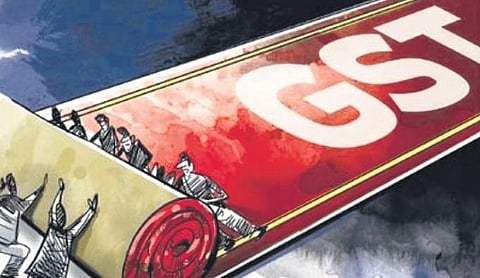

NEW DELHI: With multiple rates of goods and services tax (GST), taxpayers find it difficult to categorise the goods and services under the correct slab.
Though the GST department has been coming up with frequent clarifications, there are still gaps in the current system due to which many taxpayers escape paying high taxes.
In order to improve the compliance measures and alleviate these complexities related to classification, the government has been mulling GST rate rationalisation and it has even formed a Group of Ministers (GoM) panel.
“At present in India, there are more than 10 GST rates (including special rates). When there are multiple tax rates then there exists a risk of misclassification as taxpayers try to classify their products or services under lower tax bracket whereas tax authorities would try to classify them under higher tax bracket. Thus, lower number of tax brackets/rates will reduce possibilities of such classification disputes,” Pritam Mahure, a Pune-based Chartered Accountant, said.
Mahure gave an example of ‘muska khari or twist khari’ which is a ‘toasted product’ and should attract 5 per cent but the tax authorities in certain cases contend that it should attract 18 per cent GST. “The relevant tariff entries of GST rate notification provides for GST of 5 per cent on rusks, toasted bread and similar toasted products,” he said.
Easier compliance
Multiple rates under GST is a compliance nightmare for taxpayers. Tax experts say that the rationalisation of rate slabs will help in easing the compliance process for smaller businesses.
“As we have completed five years of GST, it is now essential to focus on the rationalisation of the rate slabs and further ease the compliance process, especially for smaller businesses,” says MS Mani, partner at Deloitte India.
For smaller businesses, higher rates, as well as multiple tax rates, are equally troublesome.
Kunal Singhal, the senior partner with Suresh Chandra & Associates, a chartered accountancy firm, explains:
“Smaller businesses don’t have as much working capital as big businesses have, so they often tend to make delayed payment of taxes with interest. When they do so, the customers to whom they supply their products cannot take an input tax credit. And if the large businesses cannot take the credit, they won’t pay to small businesses.”
Singhal says small businesses often face problems because of this and therefore, he believes if rates come down, small businesses will comply more.
Three-rate structure
The aim of the whole rate rationalisation exercise is not just to increase tax rates but bring down the number of tax slabs. Various finance ministry sources told TNIE that the government is considering a three-slab structure for GST, so that the objectives of rate rationalisation can be fulfilled.
The ultimate objective, obviously, is to improve compliance and increase revenue collection.
“All footwear products fall under 12 per cent slab but some rubber products come under 5 per cent rate. So, some footwear manufacturers claim that their products come under 5 per cent, which is wrong. As per the GST rules, more specific description should be used for the classification of goods and services and not the general description. Rate rationalisation will help in overcoming these hurdles,” a top government official said.
“There are some taxpayers who misuse the GST law and misclassify their goods and services under the lower tax slab, because of which their customers cannot claim an input tax credit,” he added.
Meanwhile, as per sources, there is a huge problem of inverted duty structure in the textile sector.
An inverted tax structure refers to a situation where the rate of GST on inputs purchased is higher than the tax payable on the output.
“While many of the inverted duty structure situations have been corrected over the past few years, it is essential to remedy the same in the textile sector and also have the same rates across the value chain of a particular sector,” Mani said.
It may be recalled that the government in December last year had deferred correcting the inverted duty structure on textiles from January 1, 2022. It had asked the GoM on rate rationalisation to look into this issue and suggest a special rate post rectifying the inverted duty structure.
“Correcting the inverted duty structure will lead to a reduction in the requirement of tax refunds,” Mahure added.
According to government sources, any rate change in the upcoming festive season will be a little disruptive, so the inverted duty structure in the textile sector will be taken up only after two to three months.
Besides the textile sector, there are some products in shipbuilding, which require correction in inverted duty.
Rate rationalisation is probably the biggest ‘reform’ that is required to make the GST regime more efficient.
As and when the exercise is complete, it is expected that the GST would be a less complex system that not only would make compliances easier but also boost revenue collection.